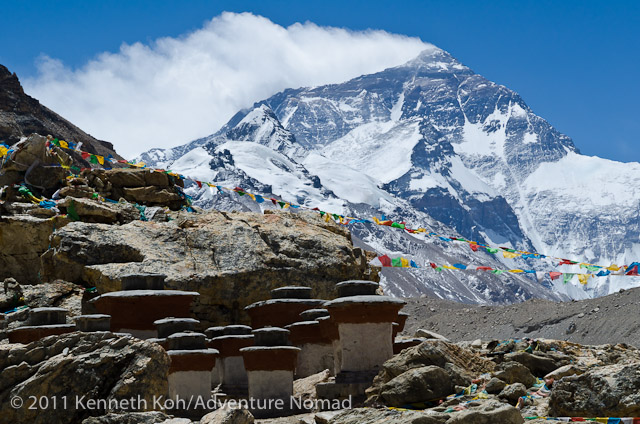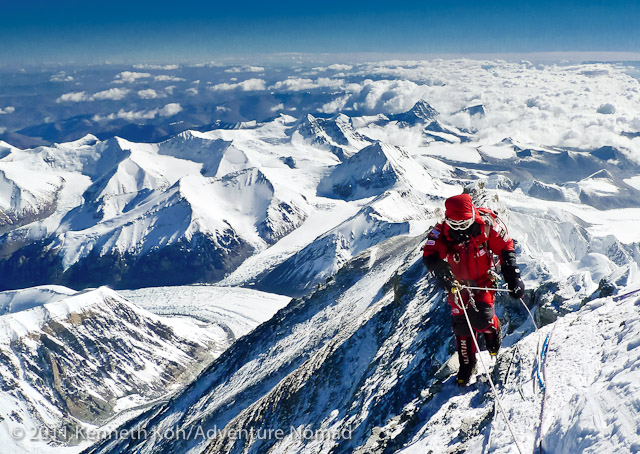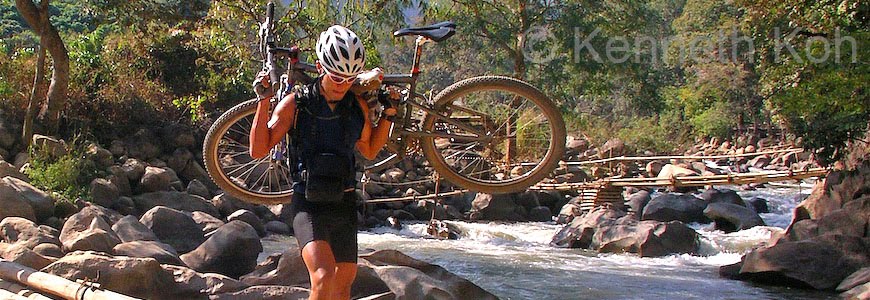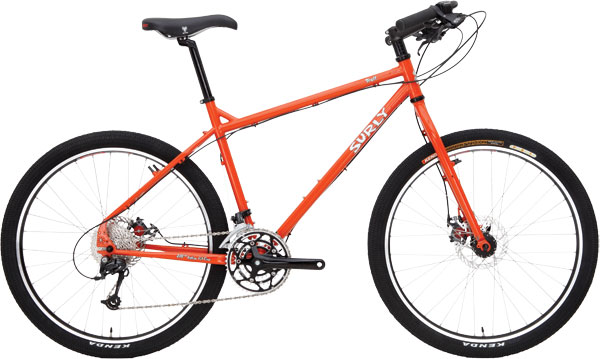There's a lot of Crossfit bashing going on, most of it directed at the elitist cult that Crossfit is perceived to have grown into. I'm not going into that. For me, it's about the training method and principles. Forgive me, I'm a Crossfit Zealot. Nevertheless, I shall do my best to
break it down into what I see as the good and the bad, and how I've
adapted it to enhance the enjoyment and competitiveness of my sport,
activities and life.
Crossfit is a community developed, empirically driven, clinically tested
strength and conditioning program. I've been using Crossfit as my
primary strength and conditioning training for
more than two years,
training both with an affiliate (that would be a gym with instructors),
as well as on my own. Prior to that, I used a conventional
bodybuilding-based gym training approach.
 |
| Mmm... Prowlers... My favorite workout! Photo © Laura Liong |
Constantly Varied
You don't get to choose your workout. In essence, your Crossfit workout is 'randomly' selected out of a hopper and could range from heavy weightlifting, to fast sprints with gymnastic movements, and could last from a few minutes to over an hour.
The Good:
We tend to choose to do what we like to do and avoid doing what we don't like to do. This leads us down the dangerous path of training our strengths and avoiding our weaknesses. A varied, randomized workout avoids this. It's training for any and all contingencies, the unknown and unknowable. This type of training works well for the person who needs to be a generalist: Soldiers, firefighters, law enforcement officers, and some athletes (like mountain climbers, rugby players, mixed martial arts fighters).
The Bad:
If you are a specialist, for example an athlete involved in a sport requiring high skill, in a known environment for a fixed time (like an indoor track cyclist), then you may need more than the generalized training that a pure Crossfit program provides. If you have a coach who can identify your strengths and weaknesses, you would benefit more by targeting your specific weaknesses, than from a generalized program.
My Take:
These days, I train Crossfit on my own, usually twice a week. I choose my workouts based on the longer term goals of my training program, a race or event. I'm at risk of falling into the trap of training my strengths, but it's a compromise given the time I have.
 |
| A broken foot is no reason not to workout. |
Functional Movements
This is the current buzz word at fitness centers worldwide. What does it mean? Functional movements are how your body naturally does real-life work, like lifting things. Your body knows to move that way because the movements are naturally efficient, powerful and safe. For example, lifting a heavy sack of potatoes efficiently to your shoulder would be a movement called a 'Clean'. The clean is naturally the most powerful, and hence efficient, way to lift a load from the ground up to shoulders. Executed at a high skill level, it is part of an Olympic lifting movement. Examples of other functional movements are squats, running, and pull ups. Functional movements are proven to illicit a high neuroendocrine response which in turn does a whole lot of good things to your body, like increasing bone density and human growth hormone.
The Good:
Form follows function, and unlike some other workout programs that focus purely on cosmetics, Crossfit uses functional movements almost exclusively because their goal is making you stronger, faster and more durable. Most workouts can be done with simple equipment: a barbell with weights, medicine ball, kettlebell, jump rope, pull-up bar and some space to run.
The Bad:
Although natural, some complex functional movement patterns need to be taught, because our bodies haven't learned the coordination and sequencing needed to do those movements. For example, the Clean. Crossfit is one of the few training programs that still teaches the Olympic lifts - The Snatch and The Clean and Jerk. Both of which are excellent power builders that induce a profound neuroendocrine response.
My Take:
I haven't stepped into a conventional gym in years. Years of spending time on machines doing isolation movements like leg extensions and leg curls haven't done much for me. The proof is not in looking at yourself in the mirror, it's in living your life, now and in the future. If you lose the ability to squat (a functional movement), you lose the ability to walk up stairs or lift yourself up off the ground. In short, you lose the ability to live life independently. No amount of leg extensions or leg curls will give it back to you.
 |
| Someone to Watch Over Me. Supervision plus motivation: another reason to workout at an affiliate. |
High Intensity
The heart of the Crossfit program is that the workout, ie. the constantly varied, functional movements, is executed at a high intensity. Why?
To answer that question, we have to get scientific:
(force x distance / time) = Power
That is the definition of power. The less time it takes to do a given amount of work, the more power. In simple terms, Power = Intensity. The more intense the workout, the more power you are putting out. Training for more power will improve just about any sport.
The Good:
There is increasing evidence that shorter, high intensity workouts are far more beneficial than long, slow workouts. They are also very time efficient.
The Bad:
High intensity workouts hurt. A lot of beginners are turned off by this sort of training. The loss of form as fatigue sets in is one of the bones of contention that Crossfit objectors raise. Functional movements are inherently safe, however, it's best to work out at an affiliate where others can watch and correct your form.
My Take:
High intensity training works. However, it is strong medicine and I have to be careful about doing too much, which can quickly lead to overtraining. I scale down both the load (weight) and number of sets as required. If I feel the need, I'll even substitute a functional strength training session instead of Crossfit by removing the intensity.
Bottom Line:
It's not for everyone. Check it out and decide for yourself. Learn more at
Crossfit.com
If you are in Singapore, try one of the affiliates:
Crossfit Singapore; or
Reebok Crossfit Enduro 














